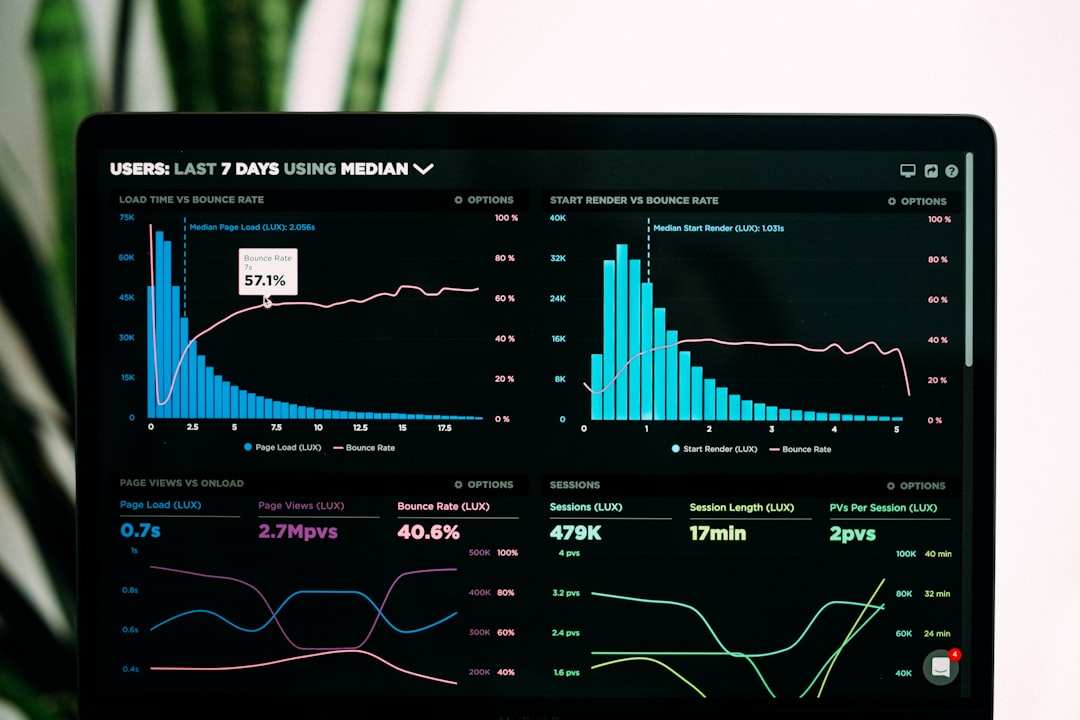Unlock encrypted content
Please enter your SSCE key to initiate on-the-fly decryption.
Decryption key: (Click cancel if you don't have the key)
Copied link to clipboard.
This feature is unavailable for free accounts. Upgrade now and enjoy all Premium benefits.
Go Premium!
This feature is unavailable for free accounts. Upgrade now and enjoy all Premium benefits.
Go Premium!
Please open this page in browser ( Google Chrome or Safari ) to use this feature.
Open In Browser
File Permissions: Ensuring Data Security and Access Control
Random related video for this blog.
Copied share link to clipboard.
With the increasing amount of sensitive information being stored and transferred online, it is crucial to have proper file permissions in place. File permissions refer to the access rights given to users or groups for a particular file or directory. By setting appropriate file permissions, organizations can ensure that only authorized individuals have access to specific data, preventing unauthorized modifications or breaches.
The Importance of File Permissions
File permissions play a vital role in data security by controlling who can read, write, or execute files. They provide a layer of protection against unauthorized access and help maintain the integrity and confidentiality of sensitive information. By assigning different levels of access to different users or groups, organizations can ensure that only authorized personnel can view or modify specific files and directories. For example, in a corporate setting, file permissions can be used to restrict access to financial records or confidential client information. Only employees with the necessary permissions can access these files, reducing the risk of data breaches or leaks. Similarly, in educational institutions, file permissions can be used to protect student records or research data from unauthorized access.Data Transfer via SSL: Secure and Encrypted Communication
When it comes to transferring data over the internet, security is paramount. One of the most effective ways to ensure secure data transfer is through SSL (Secure Sockets Layer) encryption. SSL is a protocol that establishes an encrypted link between a web server and a client, ensuring that the data transmitted between them remains confidential and tamper-proof. SSL encryption provides several benefits for data transfer. Firstly, it prevents eavesdropping by encrypting the data, making it nearly impossible for unauthorized individuals to intercept and decipher the information being transmitted. Secondly, SSL certificates verify the authenticity of the server, ensuring that the data is being sentto the intended recipient and not to a malicious entity. This helps protect against man-in-the-middle attacks and ensures the integrity of the data being transferred.
Brain-Machine Interfaces: The Future of Human-Computer Interaction
Imagine being able to control your computer or mobile device with just your thoughts. Brain-machine interfaces (BMIs) are technologies that bridge the gap between the human brain and machines, allowing direct communication and control. While still in the early stages of development, BMIs hold immense potential for revolutionizing how we interact with technology. BMIs work by deciphering the electrical signals generated by the brain and translating them into commands that can be understood by computers or other devices. This opens up a world of possibilities, from enabling individuals with physical disabilities to regain mobility to enhancing the efficiency of human-computer interaction. For example, researchers have successfully used BMIs to control robotic arms, allowing paralyzed individuals to perform complex tasks such as picking up objects or typing on a keyboard. In the future, BMIs could enable individuals to control various devices, such as smartphones or smart home systems, simply by thinking.Alien Civilizations: Exploring the Possibilities
The question of whether we are alone in the universe has fascinated humanity for centuries. While we have yet to discover concrete evidence of extraterrestrial life, the existence of alien civilizations remains a topic of scientific exploration and speculation. With billions of galaxies and an almost infinite number of planets, the possibility of other intelligent life forms existing is a tantalizing one. Scientists employ various methods to search for signs of alien civilizations, including radio telescopes, space probes, and the study of exoplanets. These efforts are driven by the desire to understand our place in the universe and to unravel the mysteries of life beyond Earth. While we may not have definitive answers yet, the search for alien civilizations pushes the boundaries of human knowledge and fuels our curiosity about the vastness of the cosmos. As technology advances and our understanding of the universe deepens, we may one day find answers to this age-old question.Large File Sharing: Overcoming Size Limitations
In today's digital landscape, the need for sharing large files is becoming increasingly common. Whether it's sharing high-resolution videos, large datasets, or design files, traditional methods such as email attachments or USB drives often fall short due to size limitations. Fortunately, there are now solutions available that enable seamless large file sharing, overcoming these constraints. One such solution is FileLu, a cloud storage provider that offers large file transfer capabilities. With FileLu, users can send files up to 250 GB in size, making it ideal for sharing large media files or collaborating on projects that involve massive datasets. By utilizing FileLu's secure and reliable platform, users can easily share files without worrying about size restrictions or compromising data security. Online Collaboration: Enhancing Productivity and Connectivity Collaboration is a fundamental aspect of modern work environments, and with the rise of remote work and geographically dispersed teams, online collaboration tools have become essential. These tools enable individuals to work together seamlessly, regardless of their physical location, fostering productivity and connectivity. Online collaboration platforms offer a range of features designed to streamline teamwork, such as real-time document editing, project management tools, video conferencing, and instant messaging. These tools allow team members to collaborate effectively, share ideas, and work on projects simultaneously, regardless of their physical location or time zone. For example, a team of designers working on a project can use online collaboration tools to share design files, provide feedback in real-time, and track project progress. Similarly, remote teams can leverage these tools to communicate and collaborate effectively, ensuring that everyone is on the same page and working towards a common goal.Multi-Factor Authentication: Strengthening Data Security
In an era where cybersecurity threats are on the rise, traditional username and password combinations are no longer sufficient to protect sensitive information. Multi-factor authentication (MFA) is a security measure that adds an extra layer of protection by requiring users to provide additional credentials beyond a password. MFA typically involves combining something the user knows (such as a password), something the user has (such as a smartphone or token), and something the user is (such as a fingerprint or facial recognition). By requiring multiple forms of authentication, MFA significantly reduces the risk of unauthorized access, even if a password is compromised. For example, when logging into an online banking account, MFA may require the user to enter a password, followed by a one-time verification code sent to their smartphone. This ensures that even if an attacker manages to obtain the password, they would still need physical access to the user's smartphone to complete the login process.Data Management: Organizing and Optimizing Information
In today's data-driven world, effective data management is essential for organizations to make informed decisions and drive business success. Data management encompasses various processes, including data collection, storage, organization, analysis, and security. By implementing robust data management practices, organizations can optimize their data assets and gain valuable insights. Proper data management involves ensuring data quality, integrity, and accessibility. It includes establishing data governance frameworks, implementing data storage systems, and defining data retention policies. Additionally, data management encompasses data security measures, such as encryption, access controls, and regular backups, to protect against data loss or unauthorized access. For example, an e-commerce company needs to manage vast amounts of customer data, including purchase history, preferences, and personal information. Effective data management allows the company to analyze this data to identify trends, personalize marketing campaigns, and improve customer experiences while adhering to privacy regulations.Renewable Energy Technology: Harnessing Sustainable Power Sources
As the world grapples with the challenges posed by climate change and depleting fossil fuel reserves, renewable energy technologies are gaining prominence as sustainable alternatives. Renewable energy refers to power sources that can be naturally replenished, such as solar, wind, hydro, and geothermal energy. These technologies offer numerous benefits, including reducing greenhouse gas emissions, mitigating environmental impact, and promoting energy independence. Solar power is one of the most widely adopted renewable energy technologies. Solar panels convert sunlight into electricity, providing a clean and sustainable source of power. Wind turbines harness the kinetic energy of the wind to generate electricity, while hydroelectric power plants utilize flowing water to drive turbines. Geothermal energy taps into the heat stored beneath the Earth's surface to produce electricity or heat buildings. The integration of renewable energy technologies into existing power grids is crucial for transitioning to a sustainable energy future. Governments and organizations worldwide are investing in renewable energy infrastructure, incentivizing the adoption of clean energy sources, and driving innovation in the sector.Mobile App Integration: Seamlessly Connecting Devices and Applications
In an increasingly interconnected world, the ability to seamlessly integrate mobile applications with other devices and platforms is essential. Mobile app integration refers to the process of connecting mobile applications with various systems, such as cloud services, IoT devices, or third-party APIs. This integration enables enhanced functionality, data synchronization, and a seamless user experience across multiple devices. For example, a fitness tracking app can integrate with wearable devices, such as smartwatches or fitness bands, to collect data on users' physical activities. This data can then be synchronized with the app's cloud platform, allowing users to track their progress, set goals, and receive personalized recommendations. Similarly, mobile banking apps can integrate with payment gateways or financial institutions' APIs, enabling users to make secure transactions directly from their smartphones. Mobile app integration enhances user convenience, improves efficiency, and enables new possibilities for innovation. By seamlessly connecting devices and applications, organizations can provide a unified experience across multiple platforms, empowering users to leverage the full potential of mobile technology. Conclusion In an ever-evolving digital landscape, understanding and leveraging technologies such as file permissions, SSL encryption, brain-machine interfaces, online collaboration, multi-factor authentication, data management, renewable energy, and mobile app integration is crucial for individuals and organizations alike. These technologies offer enhanced security, productivity, connectivity, and sustainability, paving the way for a more efficient and interconnected future. By embracing these advancements and staying informed about the latest trends and best practices, individuals and organizations can harness the power of technology to drive innovation, protect sensitive data, collaborate effectively, and contribute to a more sustainable world.Frequently Asked Questions (FAQs)
Question: How can file permissions protect sensitive data? Answer:
By assigning appropriate file permissions, organizations ensure that only authorized individuals have access to specific data, reducing the risk of unauthorized modifications or breaches.
Question: What is SSL encryption, and why is it important for data transfer? Answer:
SSL encryption establishes an encrypted link between a web server and a client, ensuring that the data transmitted between them remains confidential and tamper-proof, protecting against eavesdropping and ensuring data integrity.
Question: How do brain-machine interfaces work? Answer:
Brain-machine interfaces decipher the electrical signals generated by the brain and translate them into commands that can be understood by computers or other devices, enabling direct communication and control.
Question: How can multi-factor authentication enhance data security? Answer:
Multi-factor authentication adds an extra layer of protection by requiring users to provide additional credentials beyond a password, significantly reducing the risk of unauthorized access even if a password is compromised.
Question: What is renewable energy technology, and why is it important? Answer:
Renewable energy technology harnesses sustainable power sources, such as solar, wind, hydro, and geothermal energy, offering numerous benefits, including reducing greenhouse gas emissions and promoting energy independence.
Question: How does mobile app integration benefit users? Answer:
Mobile app integration enhances user convenience, improves efficiency, and enables a seamless experience across multiple devices by connecting mobile applications with various systems, such as cloud services, IoT devices, or third-party APIs. FileLu offers secure and reliable cloud storage solutions, including large file transfer capabilities, ensuring seamless collaboration and data security. With FileLu's premium plans ranging from 256 GB to 500 TB, and free plans from 10 GB to 250 GB, users can find the perfect storage solution to suit their needs.
By Amelia Isabella
Email: [email protected]
Related
Revolutionizing Business Operations with Robotic Process Automation, Cognitive Computing, and...
June 5, 2023
Read More
Secure Project Management Software with File Sharing, Archiving, and Collaboration...
June 5, 2023
Read More
Popular
The Future of Digital Transformation: Exploring Smart Homes, Efficient File...
November 30, 2025
Read More
Latest
The Future of Digital Transformation: Exploring Smart Homes, Efficient File...
November 30, 2025
Read More
Exploring the Benefits of Cloud Storage and Innovative Technologies in...
November 26, 2025
Read More
The Future of Technology: Exploring Biohacking, Space Tourism, and Digital...
November 23, 2025
Read More
The Future of File Sharing: Streamlined Workflows for Photographers and...
November 19, 2025
Read More
Exploring the Intersection of Technology: From Cybersecurity to Augmented Reality...
November 16, 2025
Read More
The Future of File Management: Embracing Edge Computing and Efficient...
November 12, 2025
Read More
The Future of File Sharing: Exploring User-Friendly Solutions and Data...
November 5, 2025
Read More
The Future of Cloud Storage: How FileLu Empowers Creative Professionals...
November 2, 2025
Read More
The Future of Autonomous Technologies: Innovations in Robotics, File Sharing,...
October 29, 2025
Read More
Emerging Technologies Revolutionizing File Management: From Li-Fi to Robust Collaboration...
October 26, 2025
Read More
Emerging Technologies: Exploring the Impact of File Access Auditing, Genetic...
October 19, 2025
Read More
The Future of Data Storage: Exploring Advanced Encryption, Mobile Integration,...
October 5, 2025
Read More
Exploring the Future of Data Management: Security, Efficiency, and Cognitive...
September 28, 2025
Read More
Revolutionizing Data Management: Innovations in Storage, Security, and Sustainable Technology.
September 24, 2025
Read More
























